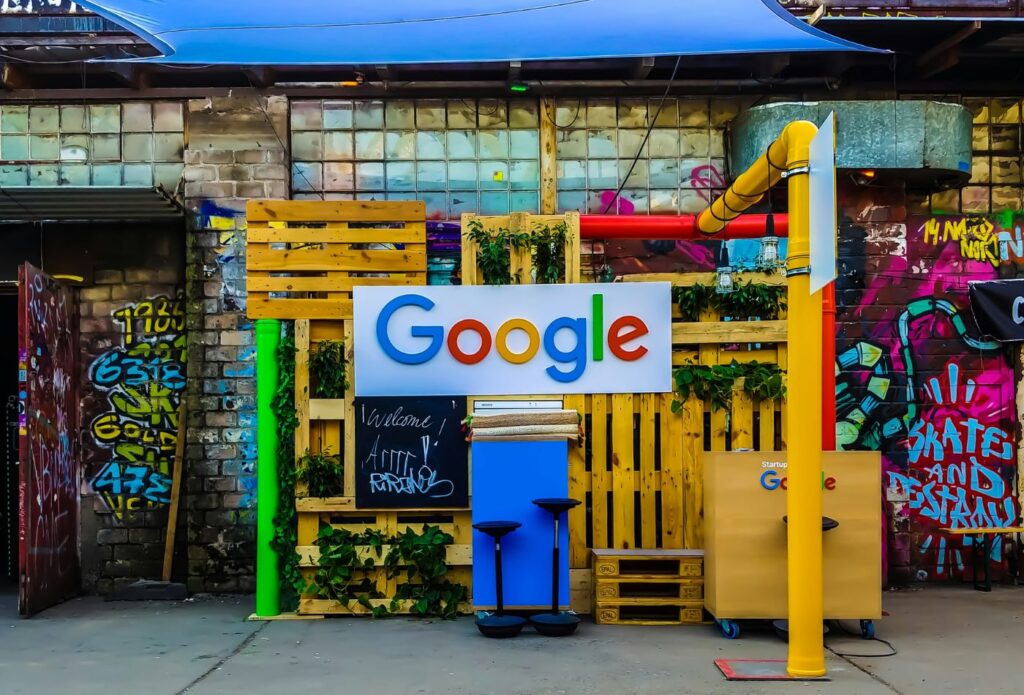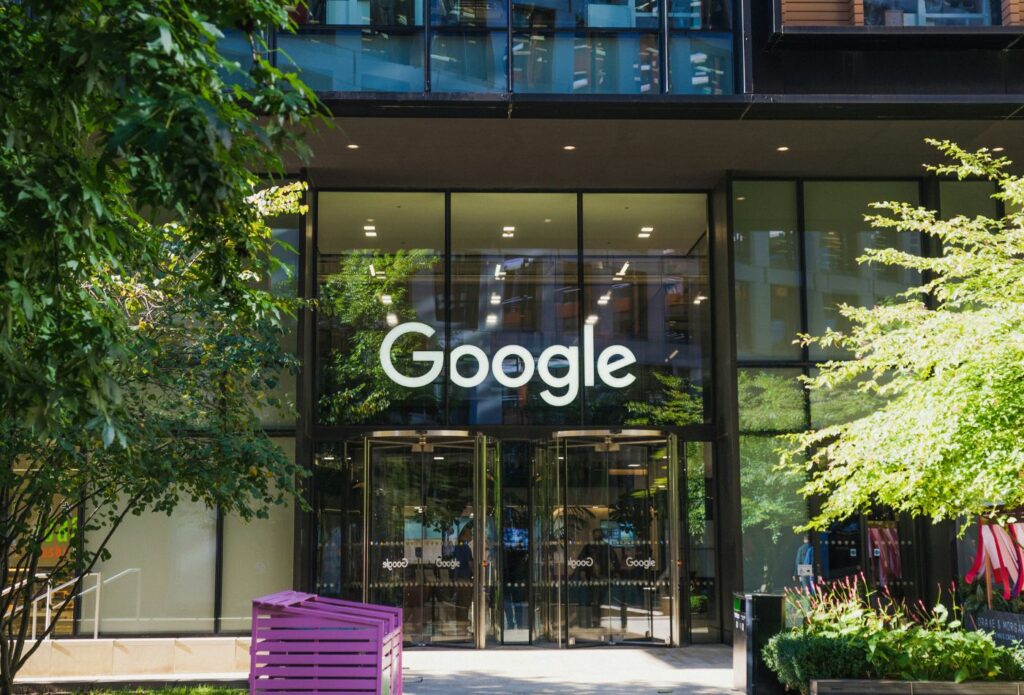
Google has released a new update that has deindexed hundreds of websites, targeting AI-generated or ‘spammy’ content. The March 2024 Core Update is good news for content marketers as low-quality content is penalised in favour of original, high-value website copy. It’s improving the quality of search rankings and refining spam policies with the goal of making the search experience the best it can be for its users. So, what does this Google algorithm update in March 2024 mean for content creation?
Why has Google made this update?
Since the release of ChatGPT, more businesses have experimented with the large language model as a replacement for external copywriters. 85.1% of AI users admit that they use the technology for article writing and content creation, noting that it saves time and helps them develop ideas for better blog posts. While using AI as a tool to help with the content creation process is fine, our experience is that it’s not a replacement for human writing. Google clearly agrees.
AI content is produced by re-using content found on the web. While sometimes it chooses content that is accurate and of high quality, we can’t be sure of the sources it uses because it doesn’t tell us. The result of this? AI could be using inaccurate information from creators who are not subject authorities to generate the content LLM users publish on their websites verbatim. And the outcome isn’t great. While the content produced may be ‘textbook’ search-ready with its SEO optimisation and great readability, the actual content experience is poor. This is what Google hopes to crack down on with this new Google algorithm update in March 2024.

The impact of the Google algorithm’s recent update
With the update, Google has said they are ‘enhancing search so you see more useful information, and fewer results that feel made for search engines’. To do this, they are:
- Making algorithmic enhancements to their core ranking systems to ensure they surface the most helpful information on the web and reduce unoriginal content in search results – AI-generated content fits right into this box.
- Google is updating its spam policies to keep the lowest-quality content out of search
Already, Google has put its plans into action as it has deindexed hundreds of websites, which are now facing the consequences of losing organic search traffic and advertising revenue. Over 800 sites have so far disappeared from Google’s search index, and while they haven’t explicitly said the prevalence of AI-generated content on these sites is the cause, a study by Originality.ai found that 100% of the affected sites showed it was likely the case as 90-100% of their posts were AI-generated.
The results from this study suggest that Google’s March 2024 Core Update is targeting websites relying heavily on AI to generate their content and manipulate search ranking.
As for the kind of sites that have been targeted, if you’re publishing content on a blog that is attached to a site offering a service – just like our Big Star blog – you’re unlikely to be penalised (unless you are publishing poor and unoriginal content). In fact, since these updates, sites that publish unique and original content have seen really good results. Sites that are publishing content in large volumes, such as affiliate marketing sites, or blogs that are selling outbound links in order to manipulate search engine are what Google has their targets aimed at. If your site ticks the box for spam content, you need to change your practices or risk getting swept up in the cull of ‘unhelpful content‘ with the Google algorithm update.
What can we learn from this Google algorithm March 2024 update?
You need to create content that Google likes – it needs to be high quality and original, not a simple check-box exercise that tries to pull the wool over Google’s eyes. While you can ask AI to create an article, blog or a piece of website content that perfectly executes on-page SEO best practices, if you don’t actually write it yourself, you’re not providing anything of different (or better) value than what already exists and is discoverable in search.
Marketers may need to adapt their strategies in light of this AI-generated content crackdown. This includes:
- Auditing existing content to identify any AI-generated material that could perceived as low-quality.
- Focusing on creating or commissioning original, high-quality content that benefits your target audience.
- Prioritising creativity, innovation and unique research to help produce original content and ideas.

But what characterises quality and originality
We see those words used frequently to describe what written marketing content – especially blogs and articles – should be like. Originality is perhaps easier to define, but what does high quality look like? Before we all lose our minds in a Zen & The Art of Motorcycle Maintenance-type way, we should start by looking at what defines low-quality content.
Low-quality content refers to any written, visual, or multimedia material lacking value, originality, accuracy, relevance, or credibility. Characteristics of low-quality content may include:
- Thin or shallow content: Content that provides little to no substantive information or insight on a topic.
- Poorly researched: Content that lacks proper research or sources to support its claims or information.
- Keyword stuffing: Overuse of keywords in an attempt to manipulate search engine rankings rather than providing valuable content to the reader.
- Grammatical and spelling errors: Content riddled with mistakes so that it’s difficult to read or understand.
- Plagiarism: Copying or repurposing content from other sources without proper attribution or permission.
- Misleading or inaccurate information: Content that provides false or misleading information, leading to confusion or misinformation.
- Unoriginal or recycled content: Repetitive or redundant material that offers nothing new or valuable to the audience.
- Poor user experience: Content that is difficult to navigate, visually unappealing, or laden with intrusive ads.
- Lack of engagement: Content that fails to stimulate interest or interaction from the audience.
- Spammy or promotional: Content that is overly promotional or sales-focused, lacking genuine value or relevance to the audience’s needs.
And next, what defines unoriginal content?
Similarly, unoriginal content refers to material that lacks originality or creativity and instead relies heavily on existing ideas, concepts, or works without significant transformation or innovation. Unoriginal content will probably look a little like this:
- Direct copying: Content replicated word-for-word or nearly verbatim from another source without proper acknowledgement or permission.
- Paraphrasing without transformation: Rewording existing content without adding substantial value or insights, essentially regurgitating the same information in a slightly different form.
- Patchwriting: Stitching together sections of text from various sources without proper synthesis or original thought, often resulting in a disjointed and unoriginal piece.
- Template-driven content: Using pre-made templates, outlines, or frameworks as a basis for content creation without customisation or personalisation.
- Content spinning: Using software or automated tools to generate multiple versions of existing content by replacing words or phrases with synonyms, resulting in content that lacks coherence and originality.
- Mashups or remixes: Combining elements from multiple sources without adding significant value or creative input, resulting in derivative works that lack originality.
- Lack of unique perspective: Failing to provide a unique viewpoint, analysis, or interpretation on a topic, resulting in content that merely reiterates common knowledge or existing viewpoints.
- AI-generated content: Using AI to generate whole pieces of content, including entire website pages, articles or blogs.

How to create original and high-quality content
Content that is both original and high-quality needs to be:
- A new, unique idea or angle on a topic that has never been published before
- Well-written with a consistent and considered tone of voice
- Delivering on the promise contained within the title
- Content that your user determines to be valuable
Unfortunately, for the latter, there isn’t a direct rulebook for creating high-quality content for your audience because with every brand comes a very different demographic of people who are interested in what you have to say. What works for us, might not work for you, and that is why – first and foremost – you need to start by pinpointing who your audience is and how you can create content that they will relate to.
What do we mean by original content?
In 2022, Google started tuning their ranking systems to reduce unhelpful, unoriginal content in search and keep it at very low levels. This meant that they prioritised:
- More content by people, for people in search.
- More helpful product reviews written by experts.
- More authentic information that you probably haven’t read anywhere else before.
The 2024 Google algorithm update continues to learn from the past two years as they refine their ranking systems to better understand if webpages are unhelpful, have a poor user experience or feel like they were created for search instead of people. To avoid being penalised by Google, your content needs to be original.
Original content refers to content of any kind that is created uniquely and authentically. Original content will offer fresh perspectives, ideas, or insights not directly derived from existing sources. Original content will:
- Present novel viewpoints, interpretations, or approaches to a topic that has not already been widely discussed or explored.
- Demonstrate originality through creative elements such as writing style, imagery, design, or multimedia presentation.
- Draw from personal experiences, expertise, or research to offer original analysis, anecdotes, or observations.
- Conduct thorough research and analysis to uncover new information, trends, or patterns, and present findings originally and compellingly.
- Propose new solutions, strategies, or methodologies to address challenges or problems in a field, based on original research or experimentation.
- Provide additional context, depth, or value to existing topics or discussions through original commentary.
- Lastly, it should be tailored to meet the specific needs, interests, or preferences of the target audience while still offering fresh and original insights.

I know that sounds like degree-level marking criteria for a compelling essay, but in short, creating original content is all about engaging your reader with content that appeals to and answers their search intent. If done well, original content will:
- Build brand trust.
- Improve search rankings and content visibility.
- Increase content engagement.
- Establish your authority in the industry.
When people trust what you say, find your content genuinely useful, and know no other source will replicate what they can get from you, they will likely stick around.
Google Algorithm update 2024: how to create original content
You know what original content is (and what it isn’t), but how do you create it? Here’s our guide:
Identify your audience and their needs
Understand who your audience is, what interests they have, and what problems or questions they have. You can gather insights directly from your audience to understand their preferences and pain points, or you can use a social listening tool, like Answer the Public, to help you gather this information.
Brainstorm unique topic ideas
Look for untapped or underexplored topics within your niche that align with your audience’s interests. You can be creative here – in fact, we encourage it. Try to brainstorm without limitations. You need to be innovative. Come up with a cracking idea first and worry about how it might fit within the search landscape after.
Conduct first and second-level research
Analyse what has already been published on your chosen topic to identify gaps, opportunities, and areas for improvement. Next, explore your primary sources to seek out original research. This includes using case studies, surveys, forums, discussion groups and interviews to uncover personal experiences and unique thoughts. This is known as your first-level research.
Once completed, you should dive deeper into the topic to go beyond surface-level information. Explore scholarly articles, books, whitepapers and expert interviews. Analyse different perspectives and consider diverse viewpoints and opinions to understand the topic comprehensively. Just be sure to verify the accuracy and reliability of the sources used to ensure your content is credible – more on this later. This is what’s known as second-level research – or sometimes “desk research”.
Develop a unique angle or insight
Distil key findings and insights from your research to develop a unique perspective or angle for your content. Offer original ideas, interpretations, or solutions that go way beyond summarising existing information, providing actionable takeaways for your audience. Consider presenting your ideas in original formats, such as videos or infographics.
Create engaging content
And lastly, you need to create engaging content. Select a content format (e.g., blog post, video, podcast) that aligns with your overall content goal and resonates with your audience. Capture your audience’s attention with effective headlines and compelling intros that highlight the value of your content. Find our complete website copywriting guide here.

Creating high-quality content for your website
Original and high-quality content go hand in hand. One will struggle to do well without the other. As we established earlier, the only thing that can really determine the quality of your content is your audience. Yoast notes that while every user is different, at the same time, they all know what they want. To write quality content, you need to:
- Write for your readers, not yourself: conduct thorough keyword research, use a social listening tool, and head over to Google to discover what your readers are searching for. Use these findings to shape your content ideas.
- Conduct thorough research: As we mentioned earlier, quality content is based on accurate and reliable information. Take the time to conduct detailed research using reputable sources, data, and statistics. This ensures that your content is well-informed and credible, which builds trust with your audience.
- Organise your content logically and with the user in mind: structure your content so it is coherent, easy to digest, and enjoyable to read. Try to avoid theories or concepts that your audience won’t understand unless you can really explain them well. Use bullet points and avoid long, confusing sentences.
- Keep your writing clear, concise, and engaging to maintain the reader’s interest: Avoid jargon or overly complex language that may confuse or alienate your audience, and instead, use simple language and storytelling techniques to convey your message in a relatable and compelling way.
- Provide valuable insights, examples, and practical tips: Quality content goes beyond surface-level information to offer real value to the reader. Share your expertise, experiences, or unique perspective to help your audience solve problems, learn something new, or achieve their goals. Our single takeaway is: make sure your reader gets a clear takeaway from your work. What’s the one thing you want them to talk about or share after reading your piece?
- Edit and proofread your work: Quality content is free from errors and typos that can detract from the reader’s experience. Take the time to edit and proofread your content carefully, checking for grammar, spelling, punctuation, and formatting mistakes.
Many of these steps easily merge with our best practices for writing original content. And that’s because the two are – almost – synonymous. To be high-quality, your content needs to be original. And for original content to make its mark, it must be written well.

What should you do in response to the Google algorithm update in March? Let’s recap:
The Google algorithm March 2024 update won’t change anything for marketers writing or commissioning content that sets them apart from their competitors and provides value for their readers.
Not every marketer fits into this box. If you’re using AI to write most of your content, you should stop or risk having your site’s pages deindexed. That wouldn’t be a fun chat to have with your company’s decision-makers. And if you’re creating content that is consistently missing the mark and not driving the results you’d expect, consider investing in copywriting support to help you reach your content goals. This is what we have been helping clients with since 2005.
The bottom line is that it is – and always has been – not about gaming the system. Don’t try to trick Google. The question should be: how do I give people something that has value that they are likely to read and share? Not: how do I get Google to improve my search rankings?
Focus instead on good, useful content that engages your customers. Then, apply SEO best practices to make it easy for search engines to find and index your content.
While search engine traffic to your site is important, if your content doesn’t possess the ability to make your target customer stick around and convert, there was really no point in trying anyway.
